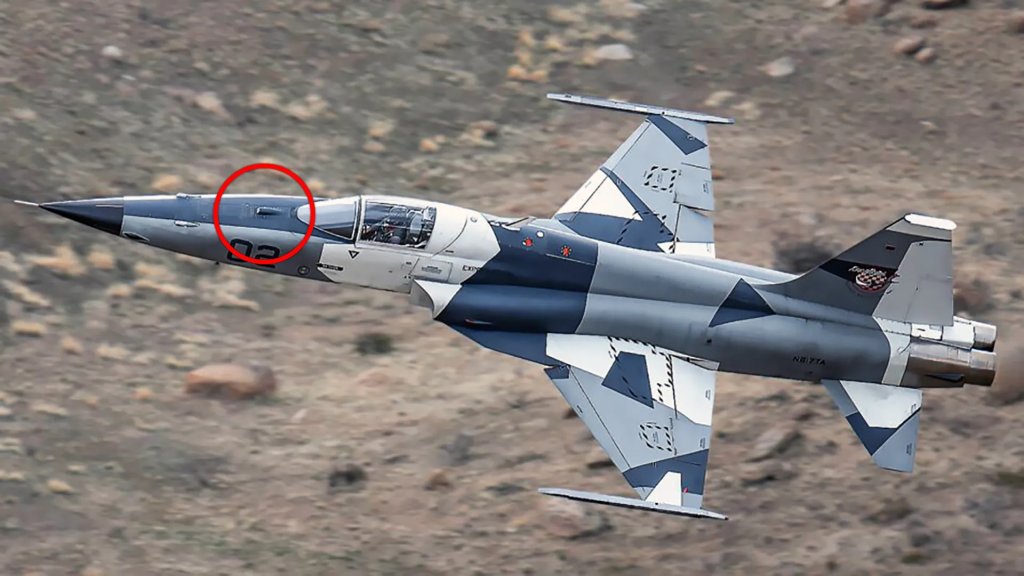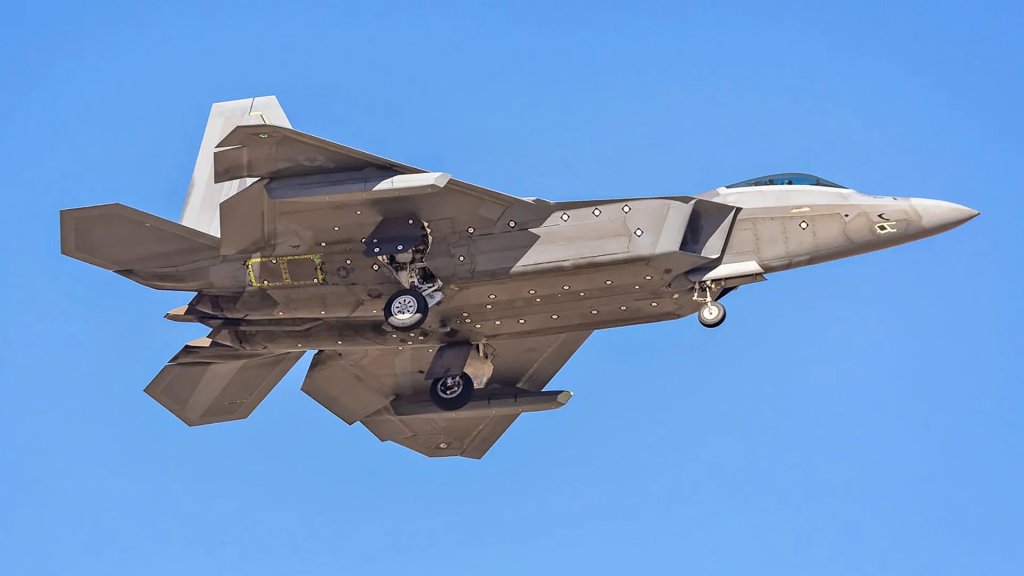The TWZ Newsletter
Weekly insights and analysis on the latest developments in military technology, strategy, and foreign policy.
The U.S. Air Force’s F-22 Raptor stealth fighters are set to get an array of new “viability” upgrades to help protect them from emerging threats and otherwise ensure their continued relevance in future conflicts. The package includes the previously announced Infrared Defensive System (IRDS), as well as enhancements to the jet’s stealthy features, radar capabilities, electronic warfare suite, and more. This is separate from other upgrades in the works for the F-22, including podded infrared search and track (IRST) sensors and stealthy range-extending drop tanks.
Details about the F-22 viability upgrades are found in the Air Force’s recently released budget request for the Fiscal Year 2026. This is a new start effort for which the service is asking for $90.34 million in funding in the upcoming fiscal cycle. The Air Force currently has 185 F-22s, but only 143 are combat-coded, with the rest being dedicated to training and test and evaluation activities. A significant portion of the overall fleet is typically down for maintenance, as well. The small Raptor force is already highly capable and heavily in demand.

“Viability represents future procurement of hardware and software capability enhancements related to, but not limited to Low Observable (LO) signature management, Pilot Vehicle Interface (PVI), countermeasures, helmet, future crypto upgrades, dynamic Synthetic Aperture Radar (SAR), cyber security, Infrared Defensive System (IRDS), which involves improved missile launch detection capabilities, and Electronic Warfare (EW) system enhancements to counter evolving EW threat,” according to the Air Force budget documents. “Additional situational awareness and mission effectiveness technologies will be incorporated to enhance the F-22 participation in Joint operations.”
Lockheed Martin first announced that the F-22s would be getting the new IRDS in January. The company has also said the system will leverage its TacIRST infrared search-and-track sensors (IRST). TacIRST was first unveiled in 2022, and the first known integration was into the noses of F-5 Advanced Tiger aggressor jets belonging to private contractor Tactical Air Support (TacAir). A pod with multiple TacIRST sensors has also been observed during past testing.

“IRDS is the Program of Record (PoR) for the F-22’s Missile Launch Detector (MLD) modernization effort that is focused on detection of long-range Air to Air Missile (AAM) / Surface to Air Missile (SAM) threats and includes replacing legacy MLDs with new sensors,” the Air Force’s 2026 Fiscal Year budget proposal adds. It also notes that a formal decision about whether to start low-rate initial production of IRDS for integration onto the F-22 fleet is scheduled to occur in the fourth quarter of Fiscal Year 2026.
The F-22’s AN/AAR-56 MLD system currently provides spherical infrared threat warning. Whether the IRDS will just improve upon those capabilities, or offer expanded functionality, possibly akin to what the F-35’s Distributed Aperture System (DAS) and other DAS-like setups offer, is still unclear.
In terms of the threat ecosystem driving the IRDS, it is worth noting here that the Air Force warned in January about the prospect of contending with increasingly advanced anti-missiles with ranges of up to 1,000 miles by 2050. China and Russia, in particular, have already been developing and fielding new and improved air-to-air and surface-to-air missiles in recent years. A brief, but intense conflict between India and Pakistan earlier this year put a particular light on the Chinese PL-15 air-to-air missile, which is already known to have been a factor in prompting the U.S. military to develop the AIM-260 Joint Advanced Tactical Missile (JATM).
No further details about the other components of the viability upgrade package are included in the budget documents.
In terms of helmet upgrades, F-22 pilots are already set to get Thales Scorpion Helmet Mounted Displays (HMD). This is a capability that was axed for the Raptor during development, and its absence has become increasingly pronounced in recent years. In 2022, the Air Force also awarded LIFT Airborne Technologies a contract to develop a Next Generation Fixed Wing Helmet (NGFWH) for F-22 pilots and others.

Explicit mention of enchantments to help with low observable (stealthy) signature management is also interesting in light of semi-secretive tests of mirror-like coatings on the F-22, as well as F-35 Joint Strike Fighters and F-117 Nighthawks, in recent years. Regardless of these exotic coatings, other modifications are sure to be included to enhance the F-22’s already significant stealth characteristics.

Infrared signature reduction has previously emerged as a particular area of interest for the Air Force amid a global renaissance in IRST systems. In general, IRSTs offer a valuable alternative (or companion) to radars, especially for spotting and tracking stealthy aircraft and missiles. IRSTs have the added benefit of being passive in nature, meaning they don’t pump out signals that can alert an opponent to the fact that they have been detected and are being tracked. They are also immune to ever-growing electronic warfare threats. This last point also speaks to the inclusion of other counter-electronic warfare capabilities in the viability upgrade effort.
As noted, the F-22 is also in line to get its own IRST capability as part of a separate upgrade effort, which the Air Force’s Fiscal Year 2026 budget has finally confirmed will come in a podded form. Raptors have been observed flying with stealthy underwing sensor pods for years now.

“The Sensor Enhancement capability will improve the F-22’s sensing and tracking and ensures Air Superiority by preserving the first look, first shot and first kill capabilities of the 142 Block 30/35 F-22 aircraft,” according to the budget documents.
The new budget proposal further notes that the Air Force has already put in initial production orders for two separate lots of 15 pods each (30 in total). The goal is to have the first pods, each of which will contain an “advanced Infrared Search and Track sensor,” delivered by the second quarter of Fiscal Year 2028. Additional testing of the system is set to continue in the interim.
There remains a possibility that the new IRDS and IRST capabilities for the F-22 might be able to work together, which could present a powerful combination. In general, multiple IRSTs networked together offer important benefits, as TWZ has previously explained:
“IRSTs, in general, are typically only able to instantaneously determine a target’s angle and bearing, and track it, with it taking more effort to determine its range using just a single sensor platform. Two IRST sensors on separate aircraft that are networked together can instantly triangulate the target’s range, which can then provide more robust engagement-quality target tracks. Lockheed Martin has demonstrated this kind of networked IRST capability in combination with its Legion Pod in the past and it is a common practice for aircraft equipped with advanced IRST capabilities. The IRST21 sensor used on the Legion Pod, as well as in other podded configurations, is a more traditional gimbaled type, as you can read more about here.”
Beyond the viability upgrades and the IRST pods, stealthy, low-drag drop tanks are still planned for the F-22.
“The F-22 Low Drag Tanks and Pylons (LDTP) are advanced technological designs providing increased persistence and range while maintaining lethality and survivability,” according to the Air Force’s 2026 Fiscal Year budget request. “The low drag tanks are intended to minimally increase drag for external tank carriage, facilitate supersonic flight with external tanks and extend the range of the F-22. The pylons are equipped with smart rack pneumatic technology to accurately control ejection performance and maintain minimum drag without stores.”
“The LDTP program will finalize technology maturation and conduct risk reduction tasks including the procurement of test pylons, evaluation of designs for improvement, completion of a manufacturing readiness assessment, and analysis to support the development and execution of initial flight test up to 0.95 Mach,” it adds. “The program will continue EMD to include the procurement of LDTP assets, as well as support equipment, evaluation of designs for improvement, flight test execution for threshold envelope (1.2 Mach), and LDTP qualification and certification.”

The Air Force’s proposed budget for the 2026 Fiscal Year shows the service plans to push ahead with now long-standing work to improve the F-22’s communications suite and avionics. The service is also continuing existing efforts to improve the reliability and sustainability of the notoriously maintenance-intensive Raptor fleet.
All of the F-22 upgrade plans come amid a degree of uncertainty around the future of the Raptor fleet. Until last year, the Air Force’s stated plan had been that the F-22s would ultimately be replaced by a new sixth-generation stealth combat jet being developed as part of the Next Generation Air Defense (NGAD) initiative.
However, the NGAD combat jet plan was put on hold last year, and, for a time, it looked like the NGAD combat jet effort might have been at risk of being cancelled. In July 2024, Gen. Kenneth S. Wilsbach said there was no longer a definitive F-22 replacement plan. By that point, Raptor modernization work had already been leveraging developments from NGAD and feeding into that initiative.
The NGAD combat jet program did survive, and Boeing has been selected to build that aircraft, which is now designated the F-47. The Pentagon has given the F-47 an extremely firm vote of confidence in the proposed 2026 Fiscal Year budget, including a request for $3.5 billion in funding and the sidelining of the U.S. Navy’s sixth-generation F/A-XX fighter ambitions so as not to compete with the Air Force’s efforts.

At the same time, important questions about the expected size of the F-47 fleet, and when those jets might begin to enter service, remain. In May, the Air Force released a graphic, seen below, with details about its current fourth and fifth-generation fighter fleets, as well as the forthcoming F-47 and Collaborative Combat Aircraft (CCA) drones. It says the service plans to acquire “185+” F-47s, which would at least allow for a one-for-one replacement of the F-22s. Lockheed Martin has also said that the Raptor could stay in service into the 2040s.

The new viability upgrade effort is the latest signal that the F-22’s career is still far from over and that the Air Force wants to ensure the Raptor fleet is as capable as it can be for years to come.
Contact the author: joe@twz.com






